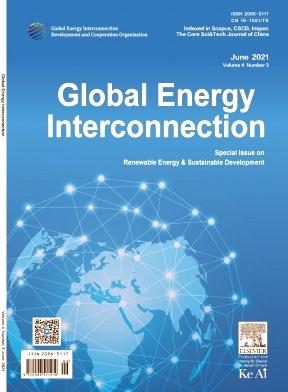加里曼丹岛充电电池储能系统(BESS)光伏电动汽车的技术经济建模与分析
IF 2.6
Q4 ENERGY & FUELS
引用次数: 0
摘要
本研究考察了婆罗洲岛11个城市混合动力系统中太阳能电池板和电池容量的最佳组合,利用该地区巨大的太阳能潜力和高辐射水平。本研究利用粒子群优化(PSO)和灰狼优化(GWO)算法分析了加里曼丹11个城市太阳能电池板和电池容量的最优组合,以最大限度地提高能源输出,降低能源成本,并最大限度地减少碳排放。结果表明,塔拉干是最理想的位置,以916.9印尼盾/千瓦时发电215,804.88千瓦时,减少排放量435884.29 kgCO2e,而萨马林达是最不理想的位置。从经济角度来看,2,466.78印尼盾/千瓦时和2,000印尼盾/千瓦时的电价产生的净现值(NPV)为正,投资回收期(PP)为9-12年,而1,500印尼盾/千瓦时的电价被认为是不利的。研究结果证明了PSO和GWO在优化可再生能源系统方面的有效性,并证实了项目的财务可行性,具有正的NPV和合理的PP。在加里曼丹岛实施可再生能源系统可以提高能源效率,显著减少碳排放,支持环境可持续发展目标。本文章由计算机程序翻译,如有差异,请以英文原文为准。
Techno-economic modeling and analysis of a PV EV charged with battery energy storage system (BESS) on Kalimantan Island
This research examines the optimal combination of solar panel and battery capacity in hybrid systems in 11 cities on the island of Borneo, utilizing the region’s significant solar energy potential and high irradiation levels. This research analyses the optimal combination of solar panels and battery capacity in 11 cities in Kalimantan using particle swarm optimization (PSO) and grey wolf optimization (GWO) algorithms to maximize energy output, reduce levelised energy costs, and maximally reduce carbon emissions. Results show Tarakan as the most optimal location, generating 215,804.88 kWh for IDR 916.9/kWh and lowering emissions by 435,884.29 kgCO2e, while Samarinda is the least optimal location. Economically, electricity tariffs of IDR 2,466.78/kWh and IDR 2,000/kWh generate a positive Net Present Value (NPV) with a payback period (PP) of 9–12 years, while a tariff of IDR 1,500/kWh is considered unfavorable. The findings demonstrate the effectiveness of PSO and GWO in optimizing the renewable energy system and confirm the project’s financial viability, with a positive NPV and reasonable PP. Implementing renewable energy systems in Kalimantan Island can improve energy efficiency and significantly reduce carbon emissions, supporting environmental sustainability goals.
求助全文
通过发布文献求助,成功后即可免费获取论文全文。
去求助
来源期刊

Global Energy Interconnection
Engineering-Automotive Engineering
CiteScore
5.70
自引率
0.00%
发文量
985
审稿时长
15 weeks
 求助内容:
求助内容: 应助结果提醒方式:
应助结果提醒方式:


